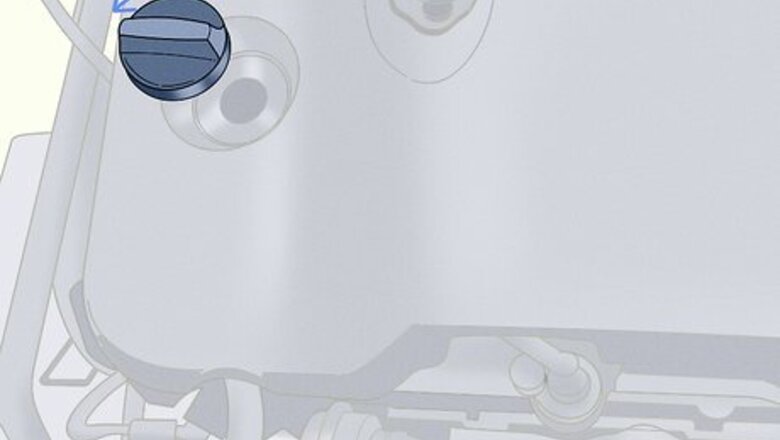
views
Draining the Oil and Removing the Old Filter
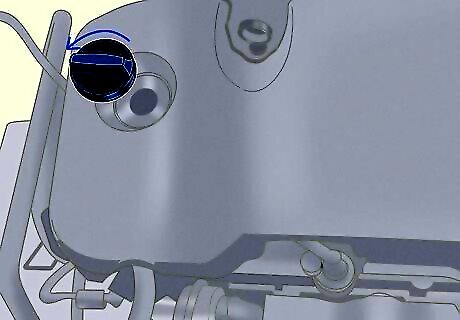
Loosen the oil fill cap to help the oil drain more easily. The oil fill cap is a round cover at the top of the engine that covers the hole where you check your oil or pour oil into. Twist it counterclockwise to loosen it so that the oil can drain out quicker. Make sure your vehicle’s engine is off before performing this procedure. If the engine is hot, wait at least 30 minutes to start the procedure. If the engine is cold, let your car warm it up for 2-3 minutes, then shut it off before beginning.
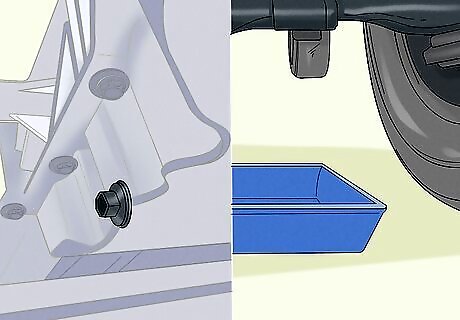
Put an oil drain pan underneath the oil drain plug. The drain plug is a square nut typically located beneath the engine block on the lowest possible point of the oil pan that is attached to the underside of the engine block. It is usually either on the bottom or the side of of the oil pan. The drain plug is sometimes located near the crankshaft, which is the shaft connected directly to the underside of the engine block that supplies power to the moving parts of the vehicle. It is housed inside a casing that is attached to the underside of the engine block.
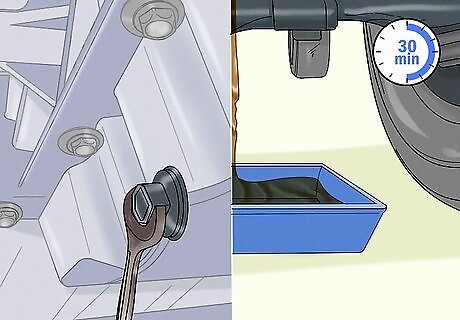
Remove the oil plug to drain the oil out, then replace the plug. Use a square-end wrench (a socket wrench without the socket) to loosen and remove it. Let the oil drain out into the oil pan until it stops trickling out. This may take 10-30 minutes. Don't forget to replace the oil drain plug! Be ready to move your hand away quickly as soon as you remove the plug so you don’t get covered in oil. If your oil drain plug has a gasket, then replace it with a new one before you put the plug back in. This will ensure a tight fit and seal.
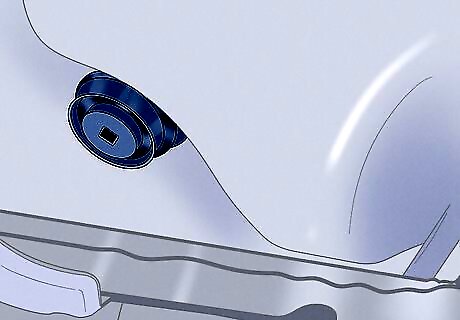
Find the oil filter by looking for a metal cylinder attached to the engine block. Look on the top, bottom, and sides of the engine to locate the filter attached to an outlet coming from the engine block. The filter is often black, white, blue, or orange and labeled as a filter. The location of the oil filter depends on the model of vehicle. Check your vehicle’s manual if you aren’t sure where the oil filter is located.
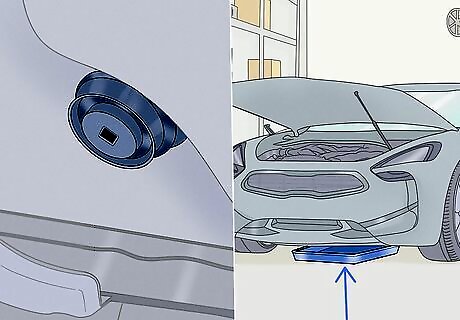
Move the oil drain pan underneath the oil filter. This is necessary to catch any oil that drains out when you remove the filter. Make sure the pan is located directly below the oil filter. Tip: You can also put some old newspapers on the ground underneath the oil pan to catch any drops that don’t make it into the pan. The amount of oil that will drain out when you remove the filter can range from a few drops to 1 liter (1/4 gallon).
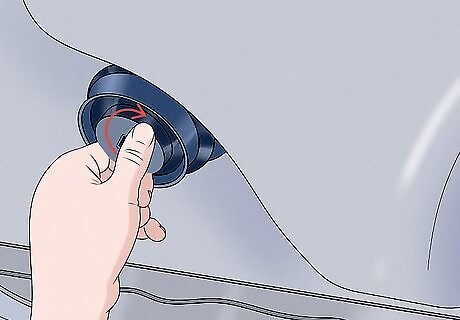
Screw off the oil filter completely by hand. Turn the oil filter counterclockwise until it comes off completely. Be prepared for oil to start leaking out when you take off the filter. It’s a good idea to put on some work gloves before you take off the oil filter to keep your hands oil-free. Make sure you screw off the filter in a position where the leaking oil won’t spill straight down your arm. Since oil filters should only be tightened on by hand, many can be removed completely by hand. However, it’s possible for them to get stuck on if they were tightened too much or there isn’t enough lubrication.
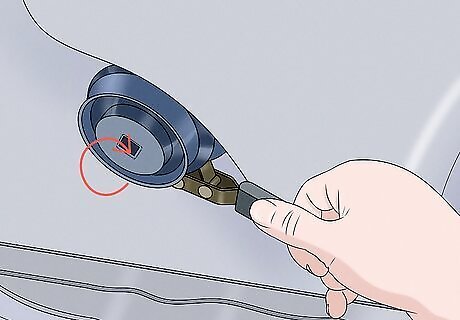
Use a filter wrench to loosen the oil filter if you can’t loosen it by hand. Try to loosen the filter by hand first, then turn the oil filter counterclockwise with a filter wrench to loosen it if it is stuck on. You just need to get it started so you will be able to screw it off all the way by hand. A filter wrench is a ratchet-type wrench designed specifically to fit tightly around oil filters. You can get filter wrenches for your specific model of vehicle online or at an auto parts dealer. Place the wrench around the oil filter, then ratchet it to tighten it and twist it counterclockwise to loosen the filter.
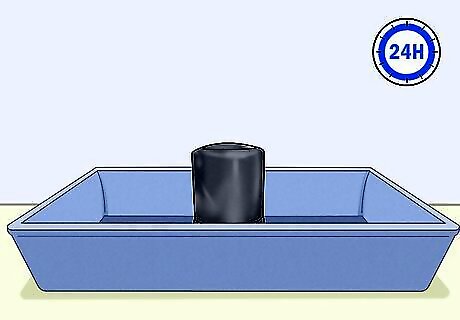
Put the old filter facedown in the oil pan and let it drain for 24 hours. You need to let all of the old oil drain out before you can dispose of the old filter. Throw it away in your regular trash after 24 hours. You will have to recycle the oil at a service station, mechanic shop, or recycling center.
Putting in the New Filter and Adding Oil
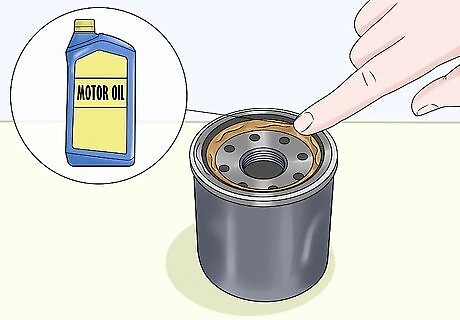
Lubricate the gasket on the new oil filter with fresh motor oil. Dip your fingers into some new motor oil and rub enough on to cover the whole rubber ring around the base of the new oil filter. This will help it fit tightly and with no leaks to the engine block. Check the engine block before attaching the new filter to make sure that the gasket from the old filter didn’t stick to it when you removed it. Always refer to your vehicle’s owner’s manual for the recommended grade and amount of oil for your vehicle.
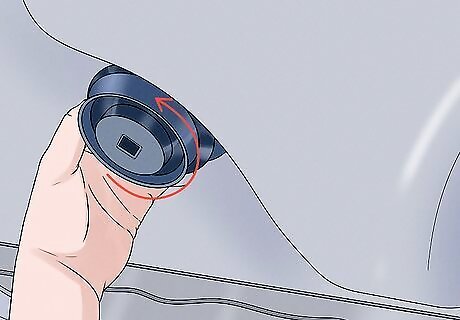
Screw on the filter by hand until you feel it make contact with the engine block. Spin the new oil filter on clockwise until you feel it stop turning easily. Only ever screw on a new oil filter by hand. Only apply gentle pressure when you start screwing on the new filter. If you apply too much pressure, you can end up cross-threading the filter and causing damage to the threads that can be expensive to fix. Wearing work gloves will give you some added grip to screw on the new filter.
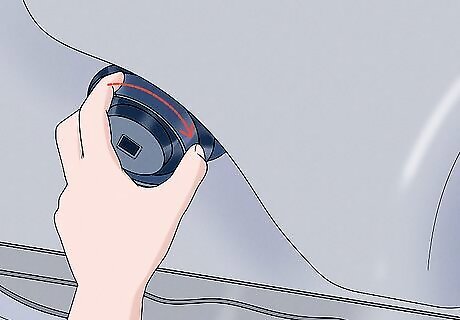
Tighten the new filter 1/4 to 3/4 of a turn. Give the new filter another partial twist, no more than 3/4 of a twist, to finish tightening it. Only do this part by hand as well. If you notice the oil filter still leaking after you tighten it, then give it 1/4 of a turn more until it is leak-free.
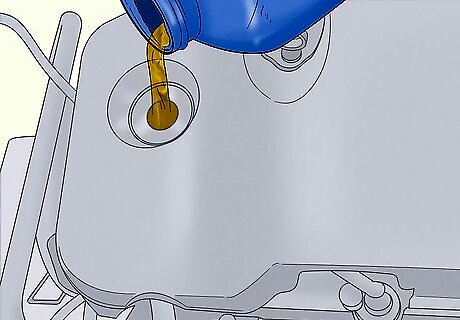
Fill up the engine with fresh motor oil. Remove the oil fill cap and place a funnel into the hole. Refer to your owner's manual to figure out what kind of oil to use and how much oil you need to add. Then, pour the recommended amount of oil into the funnel. Twist the oil fill cap back on when you're done. Types of Oil Conventional Oil: This type of oil is the cheapest and most common. It is suitable for most vehicles if you follow the standard guidelines and change your oil every 3,000 mi (4,800 km) or so. Premium Conventional Oil: This kind of oil is the standard for most new vehicles. It is a step above conventional oil. Full-Synthetic Oil: This oil is made for more high-performance engines. It has superior and longer-lasting performance. There is no need to use this oil unless your owner’s manual recommends it. Synthetic-Blend Oil: This kind of oil is recommended for vehicles with engines that work harder, such as trucks and SUVs. High-Mileage Oil: This is a special kind of oil developed for vehicles that have more than 75,000 mi (121,000 km) on their engines. Make sure to use the oil recommended in your owner’s manual. Most standard engines will not receive added benefits from putting in more expensive premium oils, whereas high-performance engines will not react well to lower-grade oils.



















Comments
0 comment